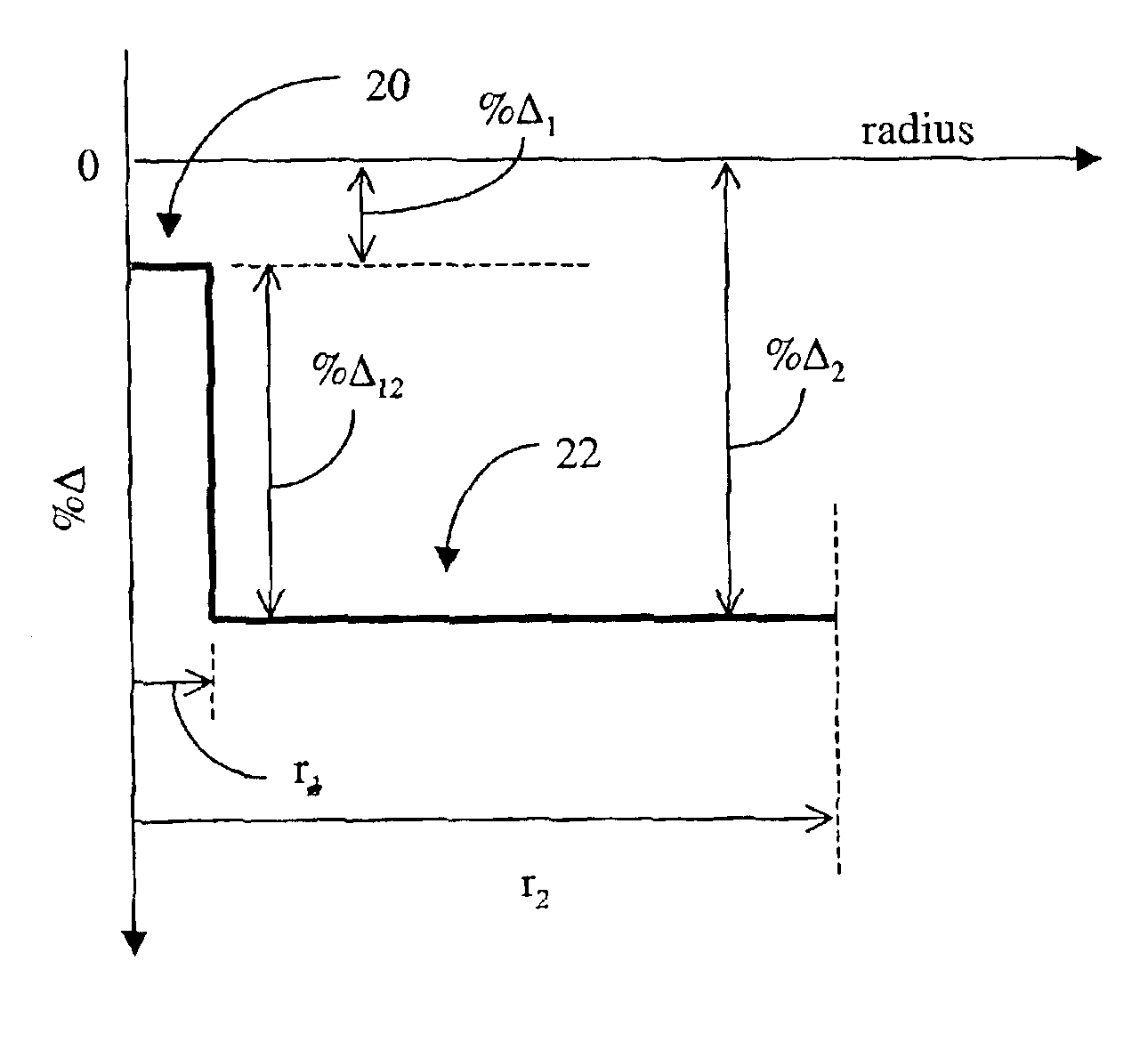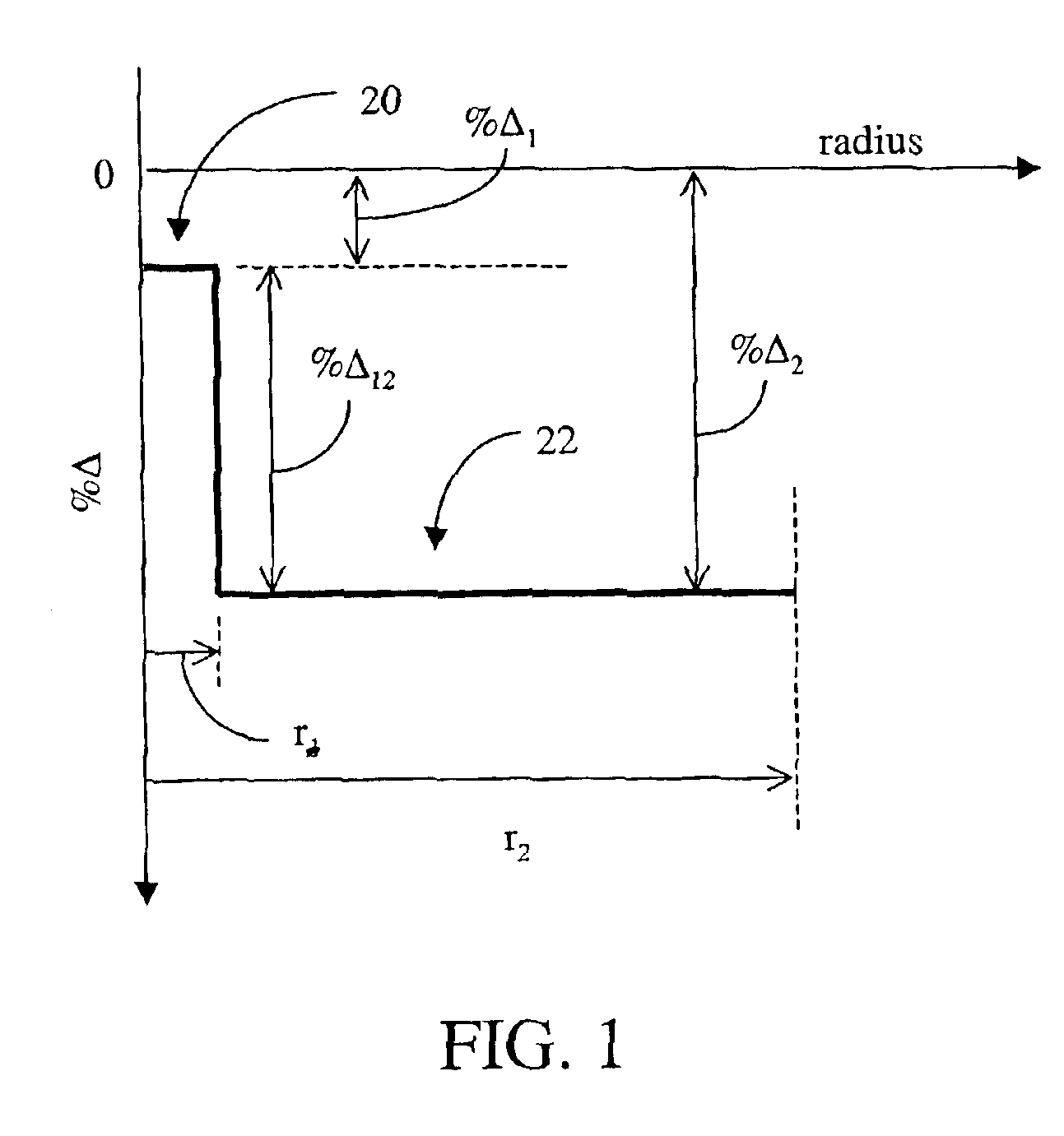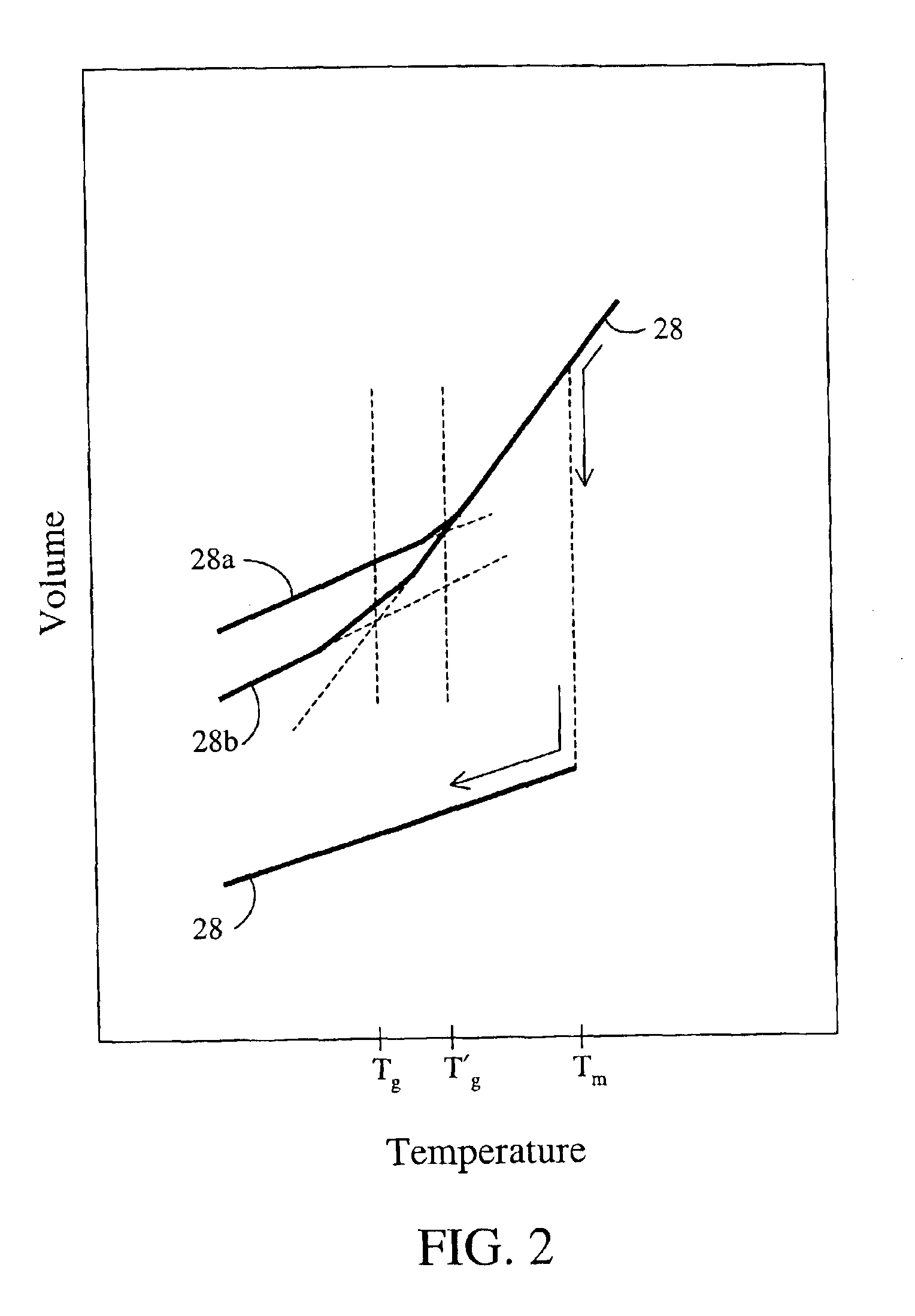Optical fiber having reduced viscosity mismatch
a technology of optical fiber and viscosity mismatch, applied in the field of optical fiber, can solve the problems of increased transmission loss, low chlorine level used, and mismatch between pure silica core glass and doped silica cladding glass
- Summary
- Abstract
- Description
- Claims
- Application Information
AI Technical Summary
Benefits of technology
Problems solved by technology
Method used
Image
Examples
example 1
[0069]The following specific example illustrates the manner in which the method of the present embodiment can be employed to produce a single-mode optical waveguide fiber having a silica core doped with Cl and F, and a fluorine-doped silica cladding. An integral handle 38 of the type disclosed in U.S. Pat. No. 4,289,522 is employed. An alumina mandrel 36 was inserted into handle 38, the central region where soot particles are ultimately deposited being tapered in diameter from about 5.5 mm to 6.5 mm.
[0070]Liquid SiCl4 was maintained at 37° C. in a container. Burner 42 traversed a 49 cm section of mandrel 36 in 25 seconds. An acetylene torch supported on burner 42 was first employed to deposit carbon particles on mandrel 36 during one burner pass. During the next 30 minutes, oxygen was flowed at a rate of 0.05 slpm through a SiCl4 container, the resultant mixture flowing to the burner. The resultant fine soot stream formed a layer of silica soot having a thickness of about 1 mm. Duri...
example 2
[0078]In a second example, an optical fiber was made using the method described in the example supra. A microprobe analysis of the fiber, shown in FIG. 15, shows the wt. % F (curve 86) and the wt. % Cl (curve 88) as a function of fiber radius. The curves show that the average wt. % F in the core region 20 of the optical fiber was about 0.6 wt. % and the average wt. % Cl in the core region 20 was about 0.2 wt. %. The average wt. % F in the cladding region 22 is about 1.6 wt. %. The optical fiber represented by FIG. 15 would be expected to have a core relative refractive index % Δ1 of about −0.146% and a Tg1 of about 176.9 C. The cladding region would be expected to have a % Δ2 of −0.432% and a Tg2 of about 261.3° C. The expected difference between Tg1 and Tg2 was calculated to be 84.4° C.
PUM
| Property | Measurement | Unit |
|---|---|---|
| draw speed | aaaaa | aaaaa |
| draw speed | aaaaa | aaaaa |
| viscosity | aaaaa | aaaaa |
Abstract
Description
Claims
Application Information
 Login to View More
Login to View More - R&D
- Intellectual Property
- Life Sciences
- Materials
- Tech Scout
- Unparalleled Data Quality
- Higher Quality Content
- 60% Fewer Hallucinations
Browse by: Latest US Patents, China's latest patents, Technical Efficacy Thesaurus, Application Domain, Technology Topic, Popular Technical Reports.
© 2025 PatSnap. All rights reserved.Legal|Privacy policy|Modern Slavery Act Transparency Statement|Sitemap|About US| Contact US: help@patsnap.com



